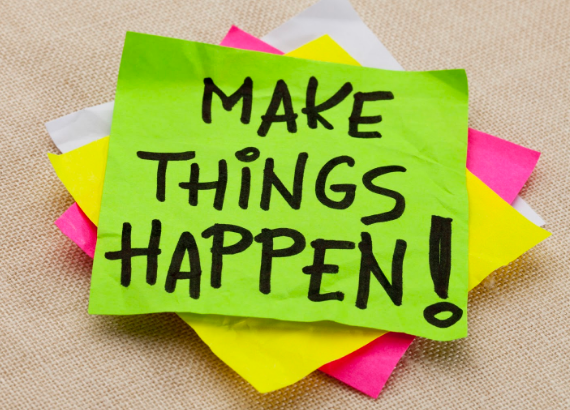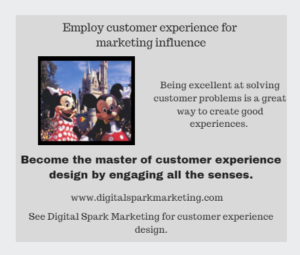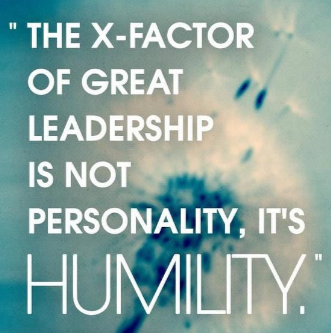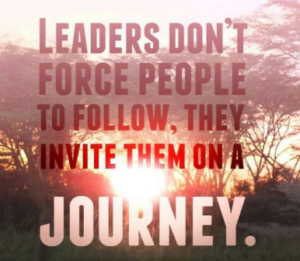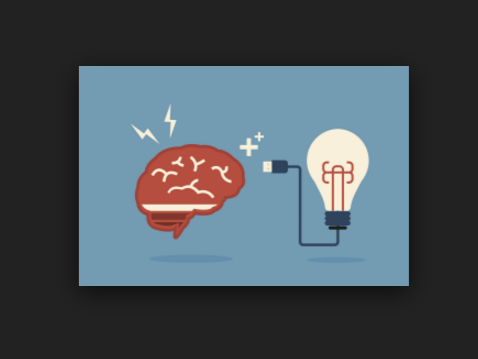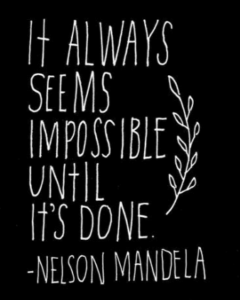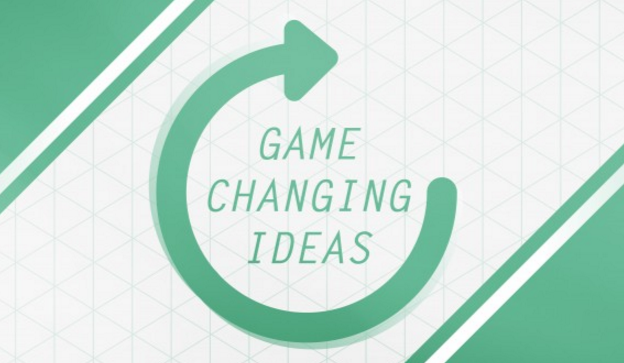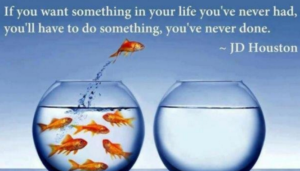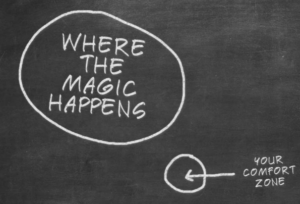Isn’t it time for you to take action? You and your team have identified an idea that can make all the difference. It can represent the mother of visualizing ideas for the business and its results.
It’s your Disney World, your iPad, or your DVD player. OK, it might not be that big, but it will be a game changer for you.
Visualizing ideas.
It looks gigantic; it is bold, and it is not like anything you have tried before. You’ve certainly been innovative before, but nothing this significant.
So you are excited, and a bit scared; but you know it is time to act.
But you have fears and reservations. You know there are lots of unknowns.
Check out our thoughts on building innovation.
As an example, consider the case of Microsoft, which failed horribly to adapt to mobile computing. In fact, when the iPhone came out, CEO Steve Ballmer dismissed it, saying, “There’s no chance that the iPhone is going to get any significant market share. No chance.”
Other attempts to adapt to Apple’s innovations, such as the Zune music player, didn’t gain traction either.
Also, change takes time. Sometimes, lots of time.
Consider the case of electricity. The electric motor and the dynamo were discovered by Michael Faraday in the 1820’s and 30’s. It wasn’t until 1874 that Thomas Edison set up the first the first electric power plant, Pearl Street Station and it still took another 40 years for electricity to have a significant economic impact.
On average, it takes about 30 years for a major discovery to take its full effect. One reason for the lag is known as the “Valley of Death,” which is the gap between scientific discovery and the development of a viable commercial product that can compete with existing technologies on price, convenience, and performance.
Our agency focuses on creativity and innovation among a few other topics. From time to time we’ll post interesting tidbits on creative thinking in general. Many have been posted on how to generate innovative ideas for business adaptation and change.
As background, my perspective on creativity is very simple. It is not about invention. Rather it is about collecting and connecting dots — bringing together two (or more) ideas to create an altogether new idea.
Related post: Learn How to Think What No One Else Thinks
We often think of innovation as inventing new things, but we may be smarter to think of it as recombining old ones. The truth is that important breakthroughs usually come from combining ideas from different domains. It often results from combining very different, sometimes weird ideas.
So let’s get back to game-changing ideas. Here are the things you can to improve the chances that your big idea, becomes a big success.
Visualization ideas … collaboration
Nearly every new idea is a synthesis of other ideas. So a great way to generate ideas is to force combinational possibilities from collaboration with other people of diverse professions and skills.
Get your team together and brainstorm how you could mix and combine your existing and new ideas together. Combine products with those from wildly different sources.
Have an end state vision
When Disney World opened, the media asked Roy Disney what Walt would think if he could see it (he had died after work had begun, but long before completion). Roy responded, “You don’t understand. Walt had already seen it – that is why it is here.”
Make sure you and everyone on your implementation team have a clear picture of what you are creating. Invoke all of the senses in creating that vision. Some people do an OK job of this at the start, but you will be far more successful if you maintain that vision, and engage people in seeing it.
Doing this keeps everyone focused on the same goal and provided energy and excitement when the challenges come.
Idea visualisation.
Visualizing ideas … multi-use
Can you come up with new product ideas that have multiple uses? They don’t have to be complex. For example imagine a drill, with bits for multiple uses, such as a drill, sander, cleaner, screwdriver, etc.
Consider an example of Internet Privacy
Running a business today almost certainly means having a digital presence, and being connected to the Internet. While the benefits of this transformation are many, the security issues are still a daily challenge, with many solutions in the marketplace to address them.
Now internet service providers can sell the browsing habits of their customers to advertisers. The move, which critics charge will fundamentally undermine consumer privacy in the US.
Yes, internet service providers (ISPs) such as Comcast, Verizon, and AT&T are free to track all your browsing behavior and sell it to advertisers without consent. ISPs have access to literally all of your browsing behavior – they act as a gateway for all of your web visits, clicks, searches, app downloads and video streams.
This represents a huge treasure trove of personal data, including health concerns, shopping habits and porn preferences. ISPs want to use this data to deliver personalized advertising.
Looking for a valid VPN solution?
Faster decision speed
The idea is big, and so you must move big. Your big step might be an announcement or proclamation that makes it hard to back down from later. Your big step may be altering your budget or eliminating other activities to focus on this idea. Historically, there have been military leaders who landed on shore and burned the boats, or crossed a river and burned the bridge. Bold moves like this focused their teams on success and removed the option of retreat. What bold move do you need to take on your game changing idea?
Extra function
What do you get when you combine a camcorder with an iPod? A digital camcorder that uses a hard drive rather than tape. Up to 7 hours of video on one hard drive. Plus you can do simple edits on the camera – like deleting scenes, even if they are in the middle of your “tape.” You can set up playlists (like on the iPod). Plus downloading to your computer is as simple as using iTunes. No need for the tape, which slows data transfer significantly.
Visualizing ideas … dual function
Visualize concepts.
This option is a little more difficult to imagine. But this only means there is more upside in this area, yes? A couple of wild dual function products we would use as examples here. The first one is an inflatable sleeping coat that doubles as a sleeping bag. It makes camping in the great outdoors a little more convenient. A second example is a jet ski that converts to a dune buggy with the simple push of a button.
Weird combinations
Combine products with those from wildly different sources. Take it to the extreme. The more bizarre the combination, the more original the ideas that are triggered. An example is the combination of a bridge and canal overpass for boats and walkers.
Maintain momentum
Bold moves are important as we have already discussed. But single bold moves are never enough. Success comes from a continuous succession of small steps taken daily or hourly all focused on achieving the goal.
Consistent action gets things done but also builds momentum. And momentum builds both results and energy. Make sure you keep moving forward, never stopping in the quest of the goal.
Combine product and service
This is an easy one to think about. Picture the smartphone product and then envision all the services this product provides the millions of apps that the smartphone can provide. Mind boggling, isn’t it?
Build a vision
The vision is critically important, but so is the reason why it matters to reach the vision. Make sure people understand at a deep level the value that will come from completing this big important project. A compelling why can drive people through nearly impossible situations and overcome incredible odds. Your project implementation may need that sort of drive, and you won’t find it without a powerful and motivating reason why.
Adding function to packaging
A simple example of this is the use of milk cartons to display missing persons’ picture and description details. Can you imagine a better place to get this kind of attention?
Prepare for potential disruptions
With any project, there will be a setback, challenges, and obstacles. But if you are implementing a game changing idea, the obstacles will likely come sooner and be bigger. While you won’t be able to anticipate all of them, you can identify some likely obstacles early.
Taking time to think about them, and plan for overcoming them isn’t negative thinking, it is mental preparation for battle. If your idea is worth it, you need to be ready to battle those obstacles. Prior planning will make you most prepared and ultimately successful.
Pay less attention to critics
Yep, if your idea is big, you are going to have critics, naysayers and those who are trying to “help.” These people are only trying to dissuade you from your goal. There is a difference between feedback that is intended to help a team succeed, and that which simply steals energy reduces hope and saps energy.
As a leader, you must know which is which and insulate your team from the critics. Either that or openly defy them.
The critics don’t see your vision and don’t understand. They don’t have to – only you and your team must. Don’t let anyone steal your dream and vision.
Build enthusiasm and passion
If no one tends the campfire, it will run out of fuel and burn out. A once blazing fire becomes a pile of smoldering ashes. At the start of your project, if you had a clear vision with a compelling reason why you had a raging fire.
As a leader, you must maintain that fire. If you do the previous steps, you will be keeping the enthusiasm, energy, and belief higher. The work will be hard, energy will wane, and if you aren’t careful, you will have helpless, useless ashes.
The bottom line
Make sure you stoke the fire for the team, and for yourself.
So if you want to find a truly great innovator, don’t look for the ones that make the biggest headlines are that are most inspiring on stage. Look for those who spend their time a bit off to the side, sharing ideas, supporting others, and quietly pursuing a path that few others are even aware of.
When you take the actions, we have discussed you will be more likely to see a positive result than if you don’t. Your ggame-changingidea is worth the effort. So make it happen.

Need some help in improving the innovation process for you and your staff? Innovative ideas to help the differentiation with your toughest competitors? Or maybe ways to innovate new products and services?
Call today for a FREE consultation or a FREE quote. Learn about some options for innovation workshops to get noticeable results.
Call Mike at 607-725-8240.
All you get is what you bring to the fight. And that fight gets better every day you learn and apply new innovative ideas.
When things are not what you want them to be, what’s most important is your next step. Call today.
Test. Learn. Improve. Repeat.
Do you have a lesson about making your innovation learning better you can share with this community? Have any questions or comments to add in the section below?
Mike Schoultz is the founder of Digital Spark Marketing, a digital marketing and customer service agency. With 40 years of business experience, he blogs on topics that relate to improving the performance of business. Find him on G+, Twitter, and LinkedIn.
Digital Spark Marketing will stretch your thinking and your ability to adapt to change. We also provide some fun and inspiration along the way. Call us for a free quote today. You will be amazed how reasonable we will be.
More reading on creativity and innovation from Digital Spark Marketing’s Library:
Learn How to Think What No One Else Thinks
Generating Ideas by Convergent Thinking
Amazon and Managing Innovation … the Jeff Bezos Vision
The Secrets to Building an Innovative Culture
Like this short blog? Follow Digital Spark Marketing on LinkedIn or add us to your circles for 3-4 short, interesting blogs, stories per week.



